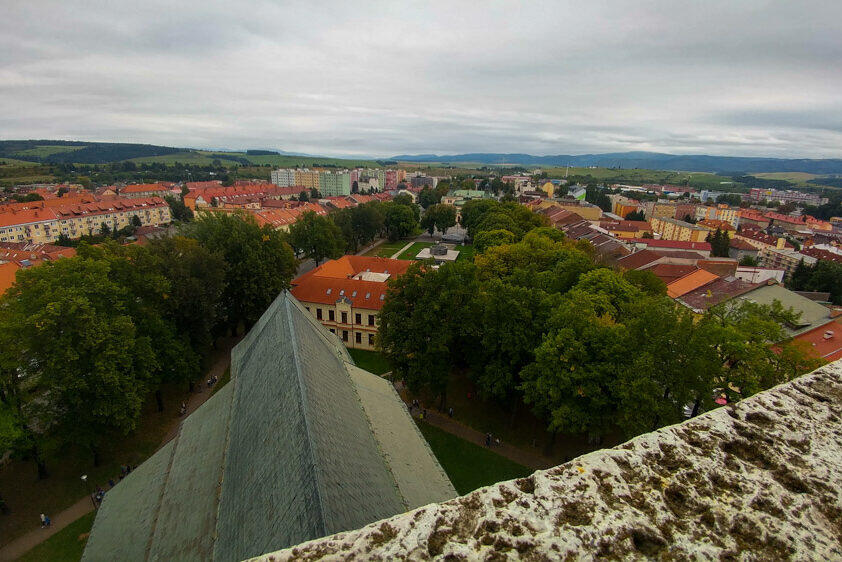As the patina likenesses of da Vinci, Mozart, Walt Disney, and the Great Sphinx of Giza gathered at the base of the Church of the Assumption of the Virgin Mary, our bespectacled tour guide rotated the tower door’s lock and led us up a narrow, spiraling staircase of stone. Many of the steps appeared to have buckled, tread by centuries of feet, and the central pillar felt almost greasy in its worn and chilly polish. I couldn’t help but wonder how many bell-ringers had trekked up these steps and imagine what their lives must’ve been like spending days above the world.
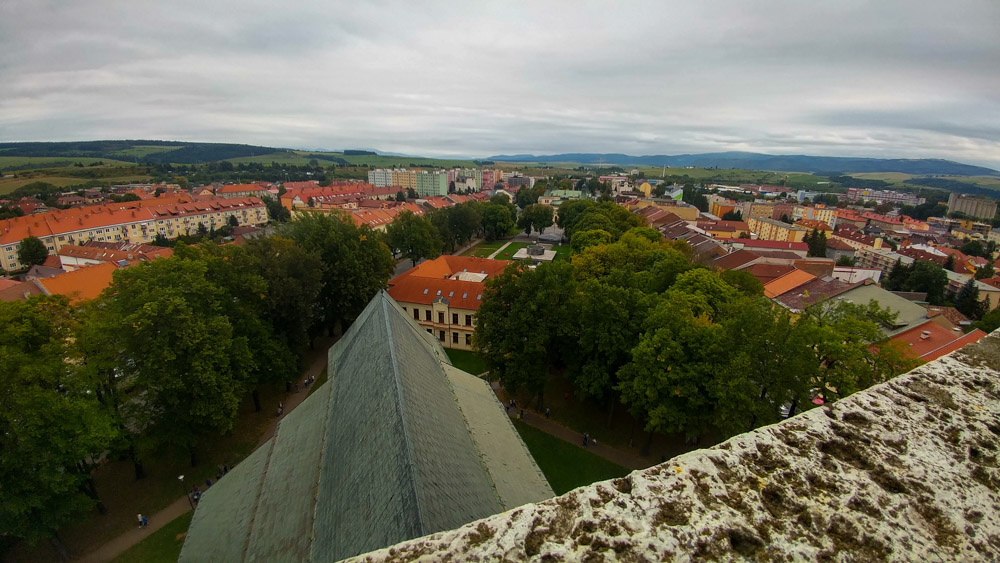
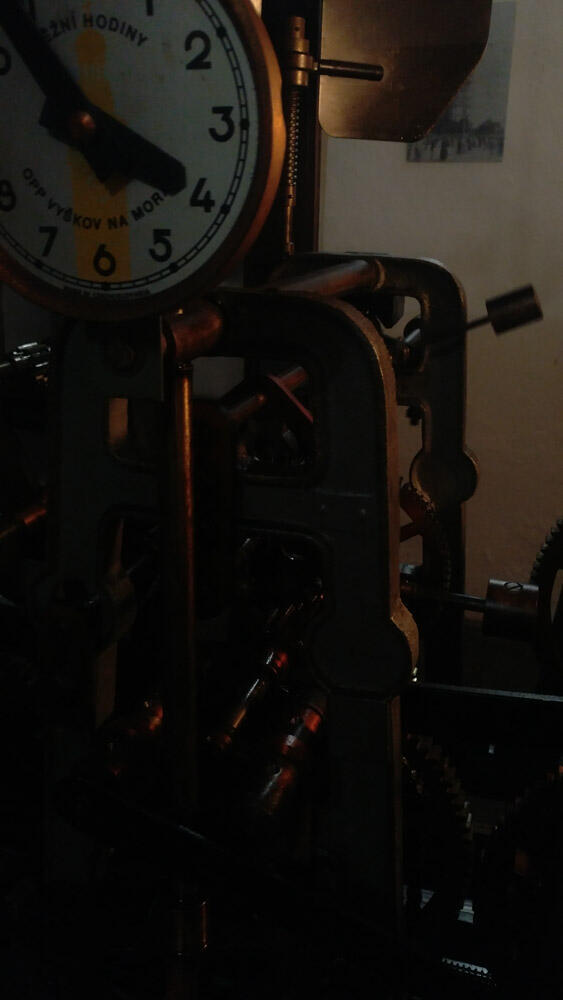
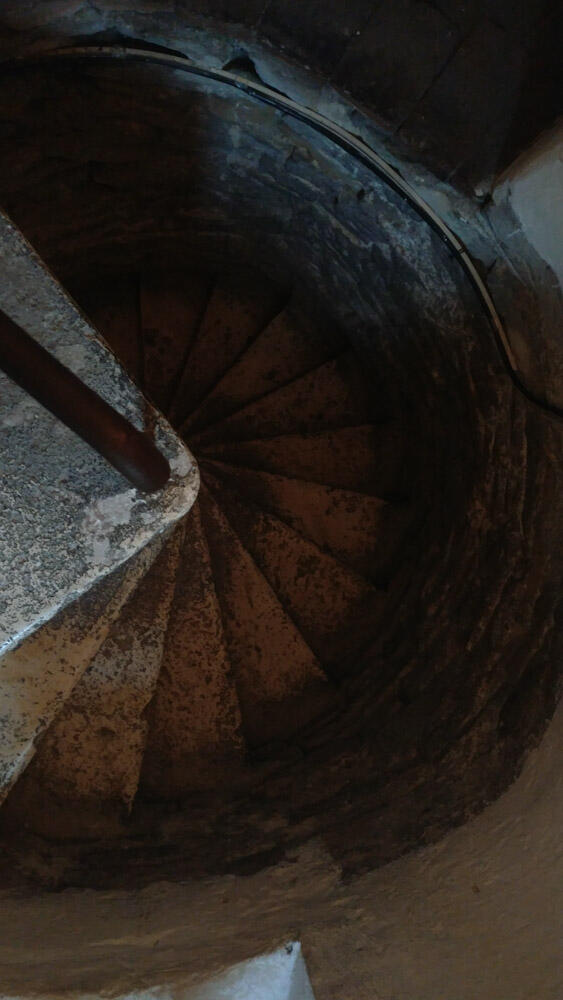
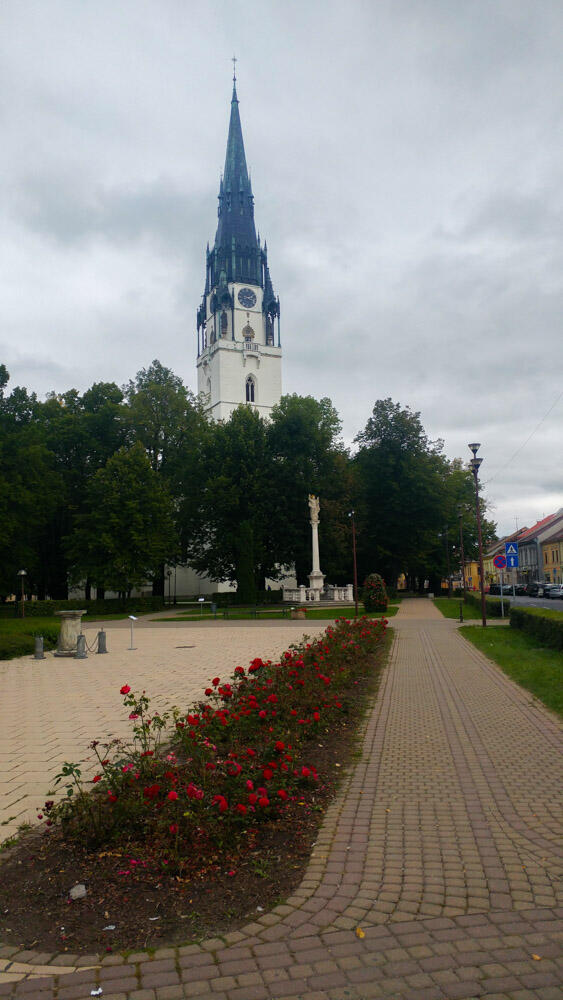
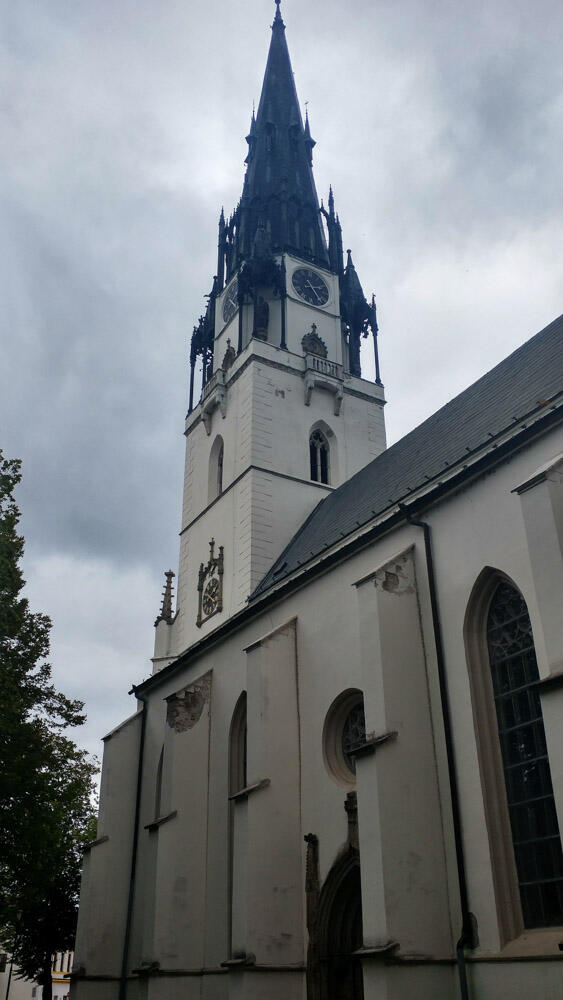
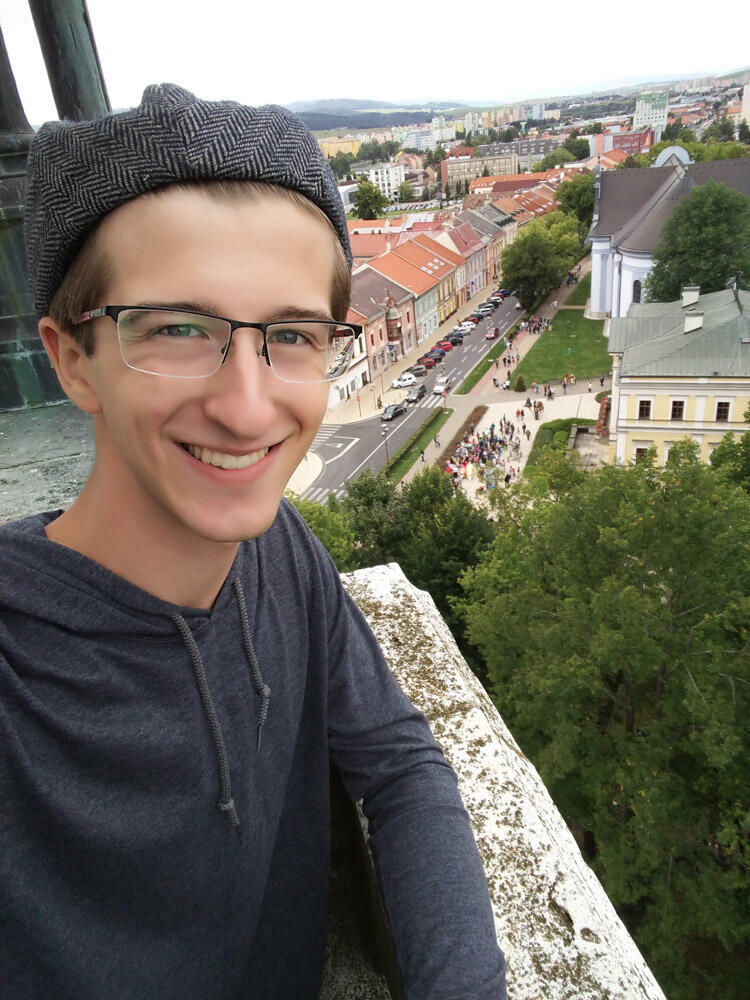
The archaic stairwell put us into an wooden room with two windows. The walls bore several drawings and photos, documenting the clock tower’s changes over the past few centuries. This belfry is the tallest in Slovakia, constructed atop the walls of its—more modest—medieval predecessor, which burned down in 1849. The church boasts beautiful Gothic architecture and a total of seven separate clock faces! From this simple room, two more wooden ladders staircases led up to the towers mechanical heart.
The interior gave off a very askew vibe. Nothing was perfect, measured or balanced. The floors creaked with every step and occasionally you could even feel the boards dip a centimeter or so beneath your step. Moreover, the clockwork on the third level, ran two stories higher through an iron tube at the most ad hoc, 50° angle. This is what kept the four upper clock faces running.
We moved onto the loft above. The church’s five bells: Urban, Concordia, Peter, Median, and Šmertný, hang here. Šmertný, the oldest of the set, was cast in 1486 and its chimes are no longer heard. Median rests in the back of the belfry with Peter, striking at 6 AM, noon, and 6 PM. Peter rings before mass on Sunday, for important religious holidays, and at funerals. Concordia, weighing 5511 pounds, is the second largest of the bells and is rung to mark every quarter hour. Finally, the largest of the bells, Urban weighs almost 12,000 pounds and spans nearly seven feet across. Concordia and Urban were crafted in 1857 by Andreas Schaudt from Budapest.
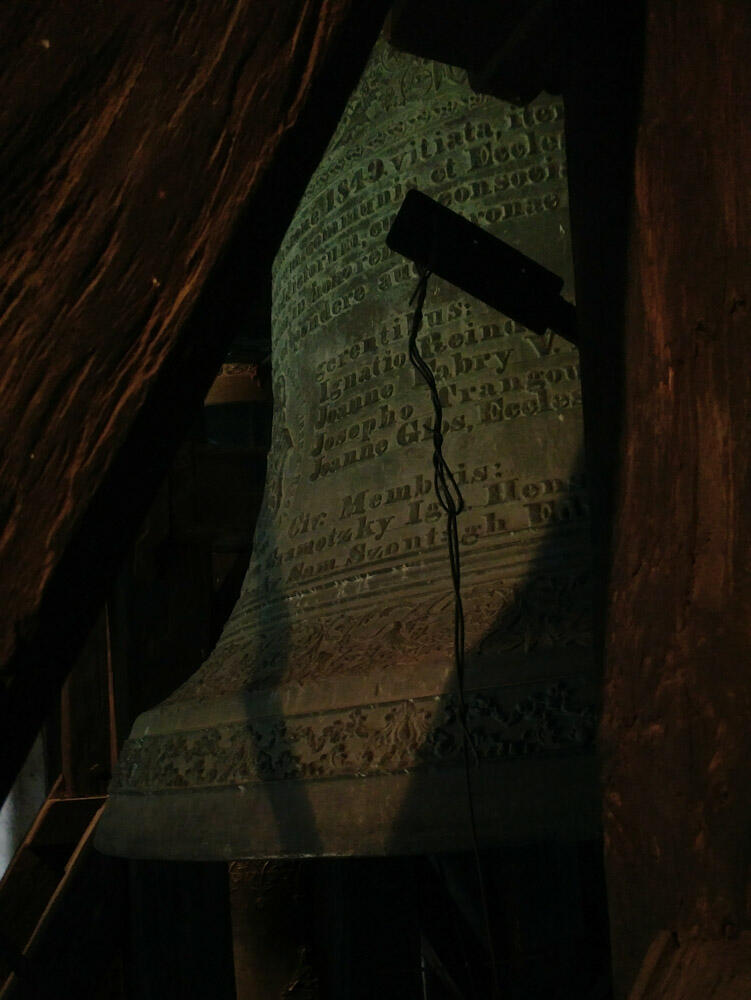
I could not tell if the following was our guide’s particular sense of humor or happenstance. During his monologue on the history of each bell, we were positioned directly beneath Concordia. The tour began just after three, so none of the bells had tolled while we were inside. But as he spoke, the clock struck 3:15 and Concordia‘s hammer fell twice, making the very air reverberate. BWAANG!! BWAANG!! Afterwards, he smiled a knowing, apologetic smile and waited for the ringing in our ears to pass.
The tour ended with views overlooking the entirety of Spisška Nová Ves, now bustling with people visiting the Zivé Sochy Festival in the square below. Four balconies for each cardinal direction gazed onto a canvas of a countryside. Beyond the town, rolling farmland led to the low, verdant mountains and gorges of Slovensky Raj National Park, farther afield the barren peaks of the Tatras Mountains stood to contrast. Their grey mantle harsh, but majestic. I couldn’t help but linger at each view, then gaze to the people below. In so old a city, from so high above, it wasn’t hard to imagine that perhaps I wasn’t really in the 21st century.
Visiting this the belfry of the Church of the Assumption of the Virgin Mary was honestly one of my favorite experiences in Slovakia yet. It definitely wasn’t as grandiose as either castle I have visited, but there was a certain down-to-earth charm about it. Perhaps in the fact that it is not simply a tourist destination nowadays, like the fortresses. Rather, it still serves the purpose that is has since the 14th century. The ringing in my ears was evidence enough of that.
Signed,
Andrew
